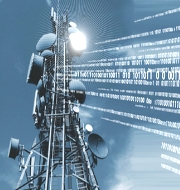2G Spectrum Case
The 2G spectrum case, also known as the 2G spectrum scam or the 2G telecom scam, was a major political and corruption scandal in India that came to light in 2010. The scam involved the illegal and underpriced sale of frequency allocation licenses for second generation (2G) mobile phone services by the Indian government to several telecom companies.
Background
In 2008, the Indian government, led by the United Progressive Alliance (UPA), allocated 122 licenses for 2G spectrum to various telecom companies. The licenses were issued on a first-come, first-served basis, rather than through a competitive bidding process. The Comptroller and Auditor General of India (CAG) later reported that the licenses were sold at prices much lower than their actual value, resulting in a loss of ₹1.76 lakh crore (approximately $26 billion) to the exchequer.
Key Individuals
The main individuals and entities involved in the 2G spectrum case include:
- A. Raja: The then Minister of Communications and Information Technology, who was accused of underpricing the 2G spectrum and favoring certain telecom companies.
- M. K. Kanimozhi: A Member of Parliament and the daughter of former Tamil Nadu Chief Minister M. Karunanidhi, who was also accused of involvement in the scam.
- Siddharth Behura: The then Telecom Secretary, who was accused of assisting A. Raja in the scam.
- Shahid Balwa: The promoter of Swan Telecom (now known as Etisalat DB), one of the companies that allegedly benefited from the underpriced spectrum allocation.
- Vinod Goenka: The managing director of DB Realty, another company that allegedly benefited from the scam.
Investigation and Legal Proceedings
The Central Bureau of Investigation (CBI) and the Enforcement Directorate (ED) investigated the 2G spectrum case. In 2011, the CBI filed a chargesheet naming A. Raja, Kanimozhi, and several others as accused in the case. The ED also filed a chargesheet under the Prevention of Money Laundering Act (PMLA).
The case was tried by a special CBI court in New Delhi. In 2017, the court acquitted all the accused, citing lack of evidence. The court held that the prosecution had failed to prove the charges of corruption and conspiracy against the accused.
However, the acquittal was challenged by the CBI and the ED in the Delhi High Court. In 2019, the Delhi High Court upheld the acquittal of A. Raja, Kanimozhi, and others in the 2G spectrum case. The court stated that the prosecution had failed to establish the charges of corruption and criminal conspiracy against the accused.
Impact on Indian Politics and Economy
The 2G spectrum case had a significant impact on Indian politics and economy. The scam led to a loss of credibility for the UPA government and was one of the major factors behind its defeat in the 2014 general elections. The case also highlighted the need for greater transparency and accountability in the allocation of public resources.
The scam also had a negative impact on the Indian telecom sector, as it led to the cancellation of 122 telecom licenses by the Supreme Court in 2012. This decision affected several telecom companies and led to a consolidation in the sector.
Subsequent Developments
In 2020, the Supreme Court of India dismissed a plea by the CBI and the ED seeking a review of the Delhi High Court’s decision to acquit the accused in the 2G spectrum case. The Supreme Court stated that there was no merit in the review petition and that the High Court’s judgment was well-reasoned and based on a correct appreciation of the evidence.
The 2G spectrum case also led to several policy changes in the telecom sector. In 2012, the government introduced a new policy for the allocation of telecom spectrum through a competitive bidding process. The new policy aimed to ensure greater transparency and fairness in the allocation of spectrum and to maximize revenue for the government.
In 2021, the government announced a series of reforms in the telecom sector, including a four-year moratorium on payment of spectrum dues by telecom companies. The reforms aimed to provide relief to the telecom sector, which had been struggling with high levels of debt and intense competition.


